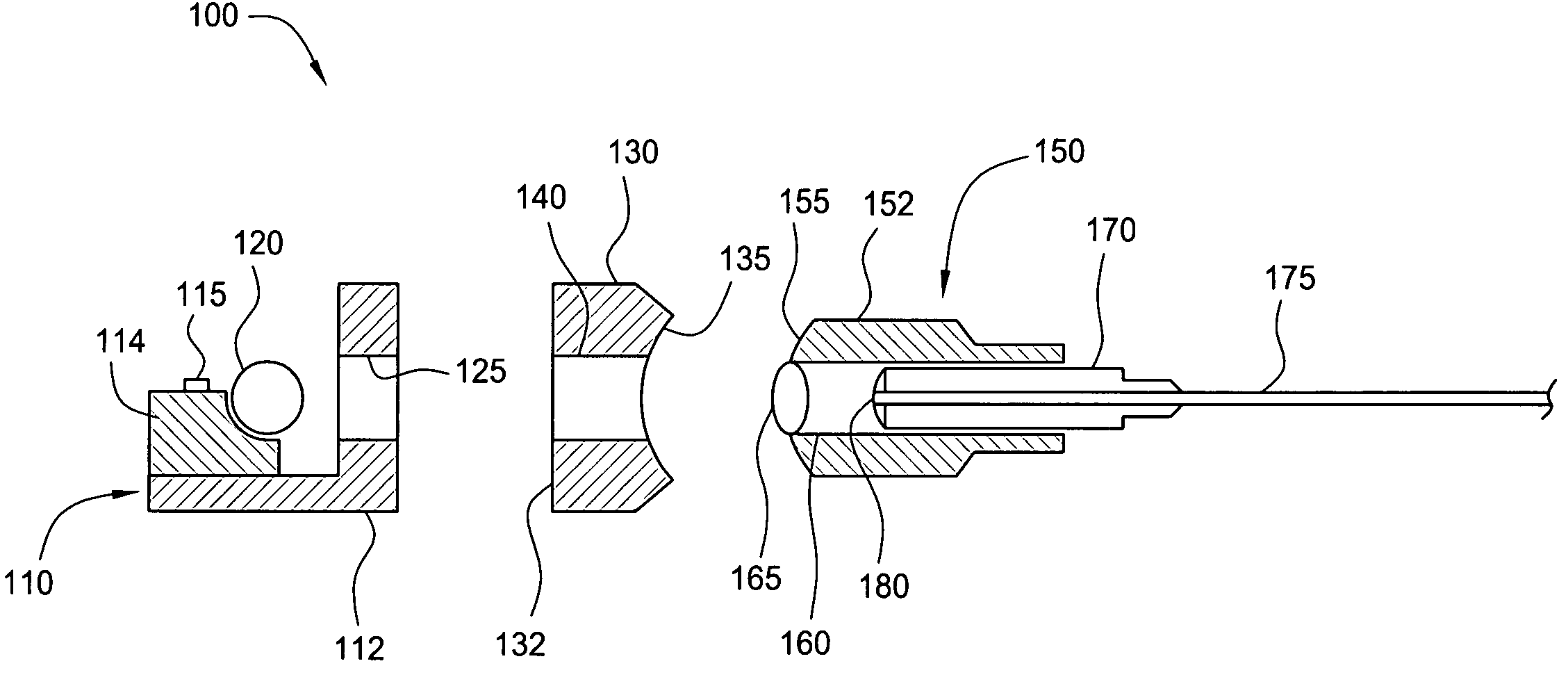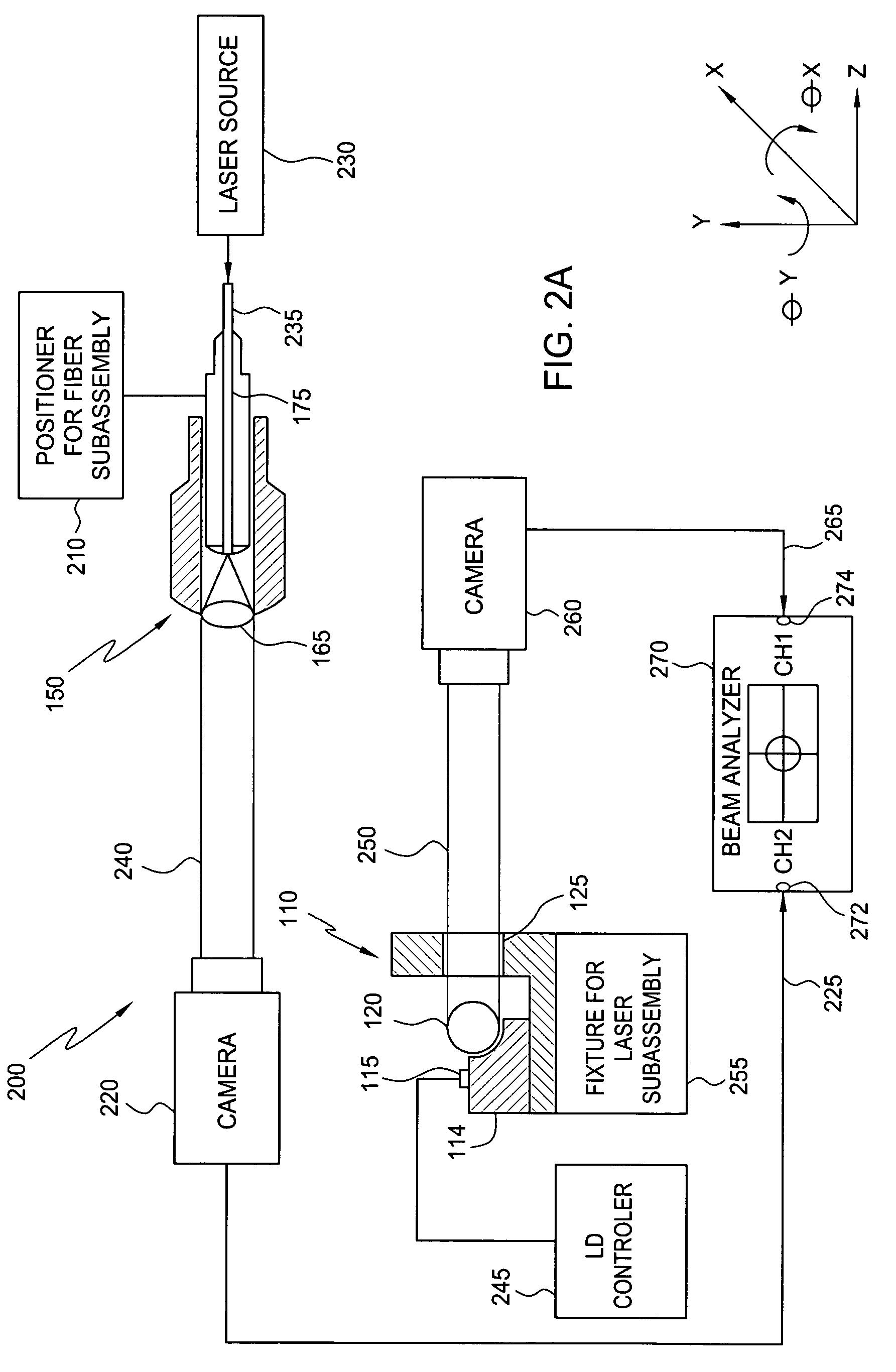System and method for assembling optical components
a technology of optical components and optical components, applied in the field of fiber optic systems, can solve the problems of increasing the complexity and cost of the assembly process, not controlling all five degrees of freedom, and suboptimal coupling efficiency, and achieves the effects of reducing the complexity and cost of assembly, high coupling efficiency, and increasing the distance between the laser subassembly and the fiber subassembly
- Summary
- Abstract
- Description
- Claims
- Application Information
AI Technical Summary
Benefits of technology
Problems solved by technology
Method used
Image
Examples
Embodiment Construction
[0018]FIG. 1 illustrates a set of fiber optic components 100 that may be assembled in accordance with the principles of the present invention. As shown, set of fiber optic components 100 includes, without limitation, a laser subassembly 110, an intermediate piece 130 and a fiber subassembly 150. Laser subassembly 110 includes, without limitation, an L-shaped base 112, upon which an optical source 114 is mounted, and a collimating lens 120. Optical source 114 includes a laser 115, which is configured to emit a source beam that passes through collimating lens 120. As described in further detail herein, collimating lens 120 enlarges the diameter of the source beam to produce a collimated beam that enlarges transverse tolerances while ensuring good optical coupling between laser subassembly 110 and fiber subassembly 150. L-shaped base 112 contains an aperture 125 that allows the collimated beam to pass through L-shaped base 112 unimpeded.
[0019]Intermediate part 130 is a cylindrically-sh...
PUM
 Login to View More
Login to View More Abstract
Description
Claims
Application Information
 Login to View More
Login to View More - R&D
- Intellectual Property
- Life Sciences
- Materials
- Tech Scout
- Unparalleled Data Quality
- Higher Quality Content
- 60% Fewer Hallucinations
Browse by: Latest US Patents, China's latest patents, Technical Efficacy Thesaurus, Application Domain, Technology Topic, Popular Technical Reports.
© 2025 PatSnap. All rights reserved.Legal|Privacy policy|Modern Slavery Act Transparency Statement|Sitemap|About US| Contact US: help@patsnap.com



